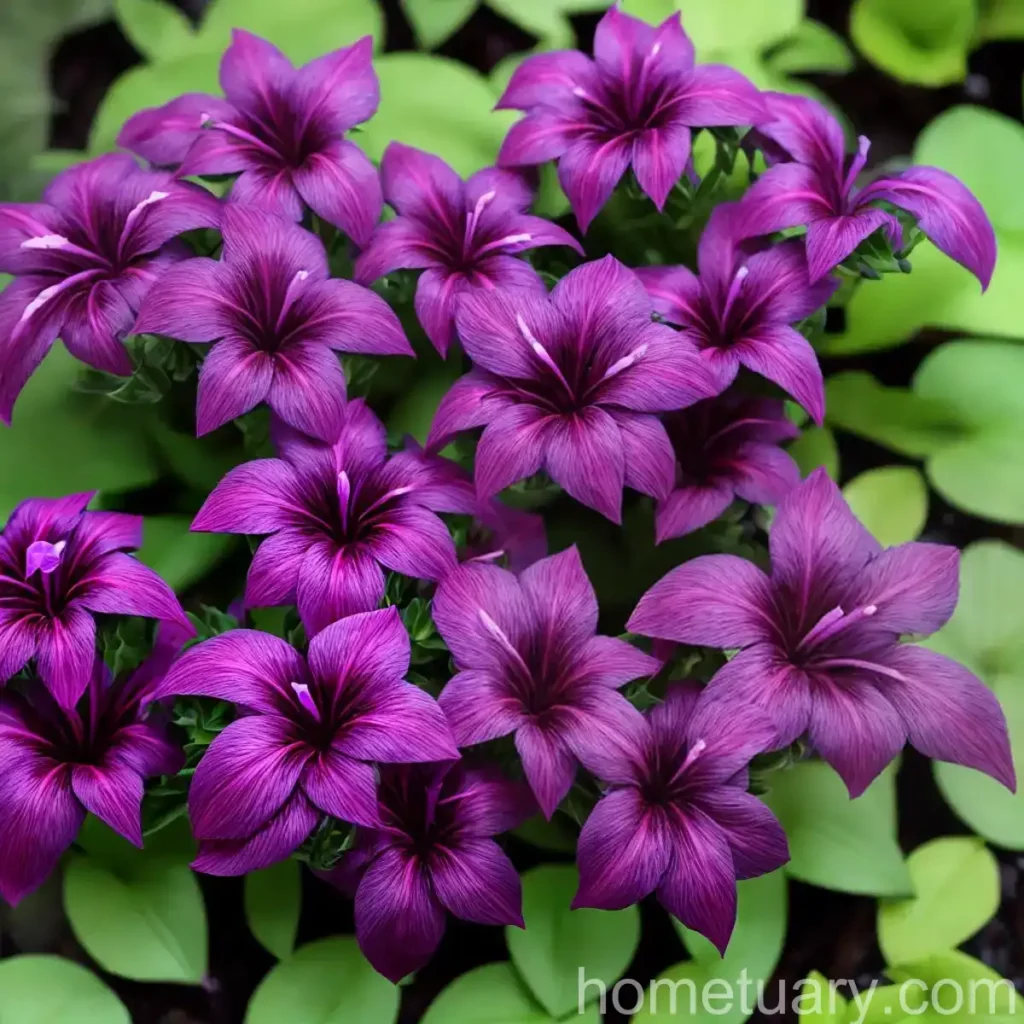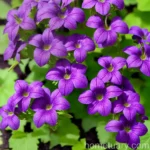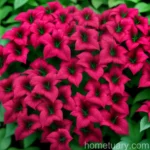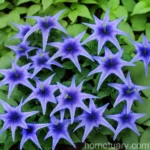Understanding Lobelia x Speciosa: A Complete Guide for Plant Enthusiasts
Lobelias are beautiful perennial plants that add vibrant color to our gardens and landscapes. Among the many varieties of lobelias, Lobelia x speciosa holds a special place due to its striking flowers and easy-to-maintain nature. In this comprehensive guide, we will delve into the culture, uses, maintenance, and interesting facts about Lobelia x speciosa, providing key insights for both beginners and experienced gardeners.
What is Plant Lobelia x Speciosa?
Lobelia x speciosa, commonly known as the hybrid lobelia, is a hybrid of Lobelia cardinalis and Lobelia siphilitica. This attractive perennial plant is characterized by its stunning spikes of tubular flowers that bloom in shades of red, pink, and purple, attracting butterflies and hummingbirds to the garden. Known for its tolerance to different environmental conditions, Lobelia x speciosa is a popular choice for both residential and commercial landscapes.
Key Takeaways – Lobelia x Speciosa
Before diving deeper into the details, here are some key takeaways about Lobelia x speciosa that we will explore in this guide:
- Varied uses in landscapes and gardens
- Water requirements and watering tips
- Sunlight and shade preferences
- Fertilization needs for healthy growth
- Ideal soil preferences
- Pruning techniques for optimal growth
- Propagation methods
- Maintaining Lobelia x speciosa in containers
- Common diseases and pest control
- Fun facts and botanist’s tips
Now, let’s move on to explore each of these aspects in detail.
Culture
Lobelia x speciosa, like many other lobelia species, can thrive in a variety of landscapes and garden settings due to its adaptable nature. Understanding its cultural preferences is essential for successful growth and vibrant blooms.
Uses
- Garden Borders: Lobelia x speciosa is often used to add a pop of color to garden borders due to its upright growth habit and beautiful flowers.
- Container Planting: Its compact growth makes it a great choice for container gardening, bringing color to patios, balconies, and small spaces.
- Butterfly and Hummingbird Gardens: The nectar-rich flowers of Lobelia x speciosa attract beautiful butterflies and hummingbirds, making it an excellent addition to pollinator gardens.
- Wet Soil Areas: With its tolerance for wet soil, it can be planted in areas with moisture-retentive soil, such as near ponds or streams, adding color to water gardens.
Water
As with many plants, proper watering is crucial for the health and vitality of Lobelia x speciosa. Understanding its water needs and following best practices will help in maintaining lush foliage and abundant flowering.
- Watering Frequency: Lobelia x speciosa thrives in consistently moist soil, especially during the growing season. It’s essential to water the plant regularly, ensuring that the soil remains consistently moist but not waterlogged.
- Mulching: Applying a layer of organic mulch around the base of the plant helps retain moisture and prevent water evaporation. This is particularly beneficial during hot and dry periods.
- Avoiding Water Stress: On hot summer days, it’s important to monitor the soil moisture closely, as Lobelia x speciosa can suffer from drought stress if not provided with adequate water.
Sunlight
Understanding the sunlight preferences of Lobelia x speciosa is vital for optimal growth and flowering. While it appreciates full sun in cooler climates, it requires some shade in hotter regions.
- Sun Requirements: Lobelia x speciosa thrives in partial shade to full sun. In regions with intense heat, providing some afternoon shade can help protect the plant from excessive heat stress.
- Adaptability: The plant can adapt to varying light conditions, making it suitable for different garden settings, including shaded borders and sun-drenched flower beds.
Fertilizer
Applying the right fertilizers at the appropriate times can significantly improve the growth and blooming of Lobelia x speciosa.
- Balanced Fertilizer: Using a balanced, water-soluble fertilizer during the growing season can promote healthy growth and abundant flowering. It’s recommended to follow the manufacturer’s instructions for the correct dilution and application frequency.
- Avoiding Excess Nitrogen: While some fertilizers contain high levels of nitrogen, it’s important to avoid excessive nitrogen application, as it can lead to lush foliage at the expense of flowers.
- Organic Alternatives: Organic fertilizers, such as compost and well-rotted manure, can be applied in the early spring to provide a slow-release nutrient source for the plant.
Soil
The soil composition and quality play a crucial role in the overall health and vigor of Lobelia x speciosa. Understanding its soil preferences is essential for successful cultivation.
- Well-Draining Soil: Lobelia x speciosa prefers moist, well-draining soil. Amending heavy clay soil with organic matter, such as compost or peat moss, can improve drainage and create an ideal growing environment.
- pH Level: It thrives in slightly acidic to neutral soil with a pH range of 5.8 to 7.0. Regular testing of the soil pH can help in making necessary adjustments using appropriate amendments.
- Moisture Retention: Adding a layer of mulch not only helps in moisture retention but also contributes to the improvement of soil structure and fertility over time.
Pruning
Regular pruning is essential for maintaining the shape and promoting continuous flowering of Lobelia x speciosa.
- Deadheading: Removing spent flower spikes encourages the plant to produce new blooms, prolonging the flowering period. Deadheading also prevents the plant from self-seeding excessively, especially in garden settings.
- Thinning Out: Thinning out crowded or tangled growth can improve air circulation and reduce the risk of fungal diseases. It also helps in maintaining a neat and tidy appearance of the plant.
Propagation
Lobelia x speciosa can be propagated by various methods, allowing gardeners to expand their plant collection and share the beauty of this perennial with others.
- Division: Dividing mature clumps in early spring is a common method of propagation. It not only creates new plants but also rejuvenates the parent plant, stimulating vigorous growth and flowering in the upcoming season.
- Seeds: Collecting and sowing seeds in the fall can also be an effective way to propagate Lobelia x speciosa. However, it’s important to provide a stratification period for the seeds by refrigerating them for several weeks before sowing.
Container Popularity
The compact growth habit and striking flowers of Lobelia x speciosa make it a popular choice for container planting, adding a splash of color to various outdoor spaces.
- Patio Planters: Planted in decorative patio planters or hanging baskets, Lobelia x speciosa creates a stunning display of cascading flowers, enhancing the visual appeal of outdoor seating areas.
- Balcony Gardens: Its suitability for small spaces makes it an ideal choice for balcony gardens and urban landscapes, where space is limited but the desire for beautiful plants is great.
- Mixed Containers: Combining Lobelia x speciosa with other annuals or perennials in mixed containers can create vibrant and eye-catching displays, whether on the patio, porch, or deck.
Now, let’s move on to understanding the common diseases and pests that can affect Lobelia x speciosa, along with effective ways to diagnose and manage these issues.
Common Diseases
While Lobelia x speciosa is generally resilient to diseases, it can occasionally be affected by certain fungal infections and other issues that can impact its health and vigor.
Disease Diagnosis
- Powdery Mildew: This fungal disease appears as a white, powdery coating on the foliage, typically in humid conditions. Adequate air circulation and avoiding overhead watering can help prevent powdery mildew.
- Leaf Spot: Characterized by dark spots on the leaves, leaf spot diseases can weaken the plant if left unmanaged. Removing and disposing of infected foliage can help prevent the spread of the disease.
- Root Rot: Overly wet soil conditions can lead to root rot, which manifests as wilting, yellowing foliage, and stunted growth. Improving soil drainage and avoiding overwatering are essential for preventing this issue.
- Botrytis Blight: Also known as gray mold, botrytis blight appears as fuzzy gray growth on the flowers and foliage. Removing affected plant parts and improving air circulation can mitigate the impact of this disease.
Common Pests
- Aphids: These small, soft-bodied insects can cluster on the tender new growth, sucking the sap and causing leaf distortion. Insecticidal soap or a strong blast of water can help in controlling aphid populations.
- Slugs and Snails: These pests are often attracted to the moist conditions favored by Lobelia x speciosa. Using physical barriers and organic slug control methods can help in protecting the plant from their feeding damage.
- Spider Mites: Given the right conditions, spider mites can infest the foliage, leading to stippled and discolored leaves. Regularly spraying the plant with water can help in preventing and managing spider mite infestations.
Now, as we’ve explored the cultural requirements, propagation methods, and potential challenges associated with Lobelia x speciosa, let’s uncover some interesting fun facts about this delightful perennial, along with botanist’s tips for successful cultivation.
Botanist’s Tips
- Companion Planting: Pairing Lobelia x speciosa with plants that have similar cultural requirements, such as astilbe and Japanese iris, can create visually appealing combinations in garden borders and perennial beds.
- Mulching: Applying organic mulch not only helps in moisture retention but also acts as a natural insulator, protecting the plant’s roots from temperature fluctuations during extreme weather conditions.
- Spring Pruning: Conducting light pruning in the early spring encourages new growth and helps maintain a desirable shape for the plant. Removing any damaged or diseased growth is particularly important at this time.
Fun Facts
- Historical Significance: The lobelia genus has had historical significance in traditional medicine among various Native American tribes, who used different species for a range of medicinal purposes.
- Wildlife Attraction: Lobelia x speciosa’s nectar-rich flowers attract a wide variety of pollinators, including bees, butterflies, and hummingbirds, making it an invaluable addition to wildlife-friendly gardens.
- Cultural References: The vibrant flowers of Lobelia x speciosa have made it a popular choice for adding color to floral arrangements, event decorations, and landscape designs.
- Genetic Diversity: Through ongoing hybridization efforts, new cultivars with diverse flower colors and growth habits continue to enrich the genetic diversity within the Lobelia x speciosa species.
Wrapping Up
In conclusion, Lobelia x speciosa is a versatile and visually appealing perennial that adds color and vibrancy to gardens, landscapes, and outdoor spaces. Its adaptability to varying light and soil conditions, coupled with its attractive flowers and wildlife-friendly nature, makes it a valuable addition to any plant enthusiast’s collection. By understanding its cultural requirements, propagation methods, and potential challenges, gardeners can successfully grow and enjoy the beauty of Lobelia x speciosa in their own outdoor spaces.
Whether used in garden borders, containers, pollinator gardens, or naturalized landscapes, Lobelia x speciosa continues to captivate the hearts of plant enthusiasts and provide joy through its floral displays. As we appreciate its beauty and resilience, let’s continue to explore the diverse characteristics and uses of this delightful plant, nurturing it in our gardens and landscapes for generations to come.
Keywords: Lobelias for gardens, Lobelia speciosa varieties, Growing Lobelia speciosa, Lobelia hybrid plants, Best Lobelia cultivars, Lobelia x speciosa care, Lobelia x speciosa planting tips, Lobelia x speciosa maintenance, Lobelia x speciosa characteristics, Lobelia speciosa flowers, Lobelia flowering plants, Lobelia x speciosa garden design, Lobelia x speciosa landscape ideas, Perennial Lobelia x speciosa, Lobelia x speciosa for borders, Lobelia x speciosa container gardening, Lobelia x speciosa in pots, Lobelia x speciosa season, Lobelia x speciosa colors, Lobelia x speciosa sun requirements, Lobelia x speciosa shade tolerance, Lobelia x speciosa watering needs, Lobelia x speciosa soil preferences, Lobelia x speciosa spreading habit, Lobelia x speciosa growth rate, Lobelia x speciosa height, Lobelia x speciosa pruning, Lobelia x speciosa disease resistance, Lobelia x speciosa pest control, Lobelia x speciosa companion plants, Lobelia x speciosa wildlife attraction, Lobelia x speciosa medicinal uses, Lobelia x speciosa herbal benefits, Lobelia x speciosa historical significance, Lobelia x speciosa folklore, Lobelia x speciosa symbolism, Lobelia x speciosa cultural references, Lobelia x speciosa pollinator garden, Lobelia x speciosa hummingbird attractant, Lobelia x speciosa butterfly-friendly plant, Lobelia x speciosa bee garden, Lobelia x speciosa naturalizing, Lobelia x speciosa low-maintenance plants, Lobelia x speciosa drought tolerant, Lobelia x speciosa wet soil adaptable, Lobelia x speciosa seasonal interest, Lobelia x speciosa native habitat, Lobelia x speciosa origin, Lobelia x speciosa hybridization, Lobelia x speciosa genetic diversity.
References:
1. The Royal Horticultural Society. (n.d.). Lobelia x speciosa. Link
2. Missouri Botanical Garden. (n.d.). Lobelia x speciosa. Link
3. University of Maryland Extension. (n.d.). Lobelia x speciosa – Hybrid Cardinal Flower. Link















